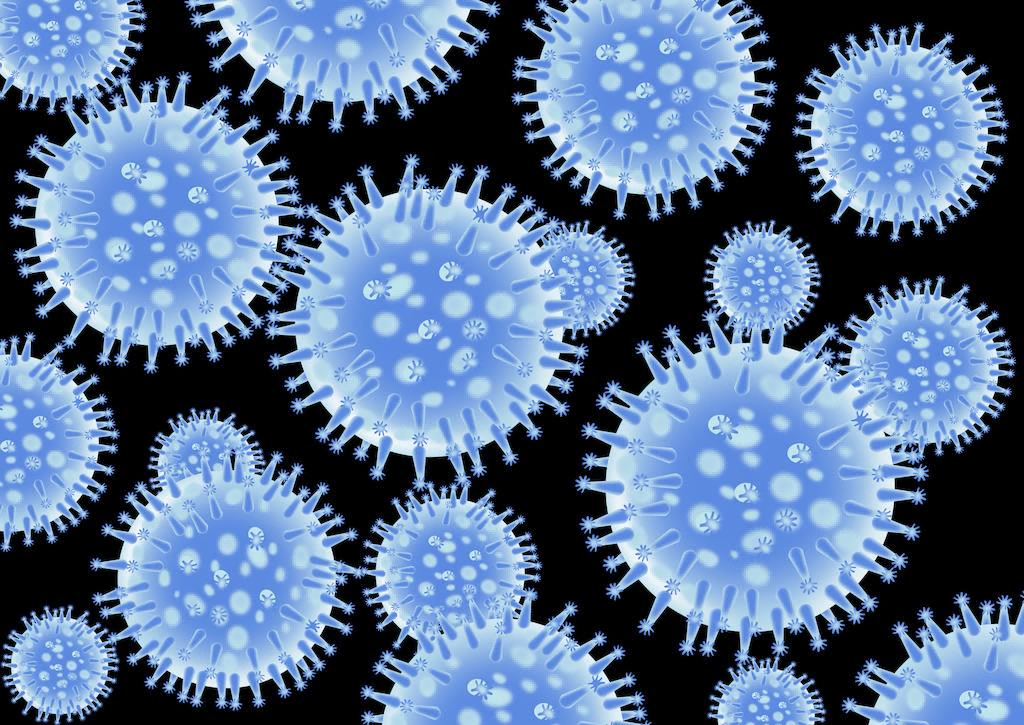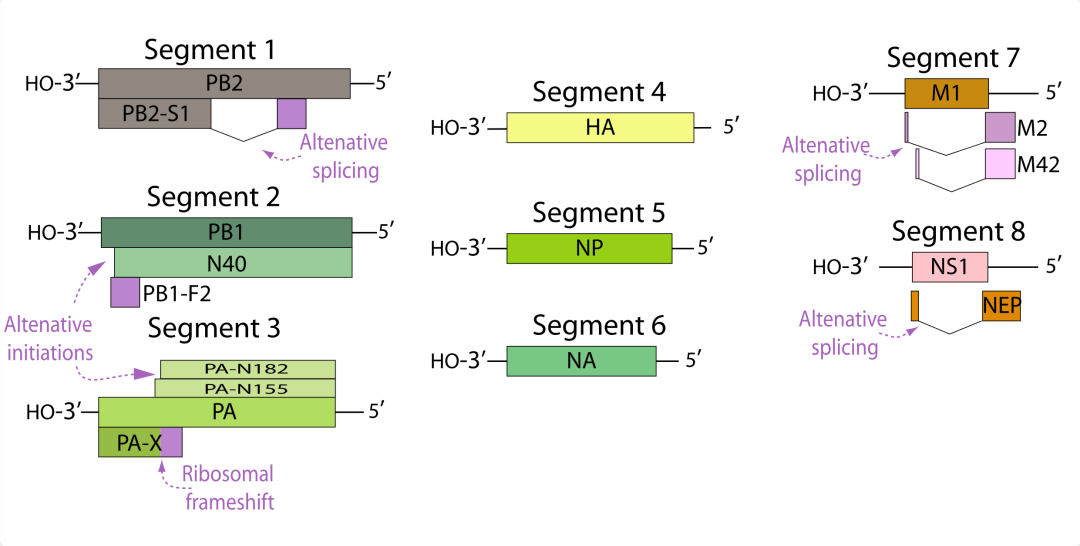Influenza virus is actually an enveloped virus, a unique member of the Orthomyxoviridae family. It is only 80 to 120 nanometers in diameter and has 7 to 8 independent single-stranded negative-sense RNA gene segments. Each gene segment codes for a different protein, providing support for it to perform different functions.
Influenza viruses can be divided into four types. According to the antigenic differences of the viral nucleoprotein and matrix protein, they are type A, type B, type C and type D. Influenza A virus is the most common infectious strain and can infect a wide range of hosts, including humans, terrestrial and marine mammals, bats, and birds.

Influenza A virus, also known as influenza A virus, has a genome composed of 8 segments. These segments encode polymerase basic protein 2 (PB2), polymerase basic protein 1 (PB1), polymerase acidic protein (PA), hemagglutinin (HA), nucleoprotein (NP), and neuraminic acid respectively. Enzymes (NA), matrix proteins (MP) and non-structural proteins (NS). According to the different genetic and antigenic properties of hemagglutinin and neuraminidase, influenza A virus can be subdivided into 18 hemagglutinin subtypes and 11 neuraminidase subtypes.

Hemagglutinin protein plays a key role when viruses invade host cells, but its activity requires the help of host cell proteases, such as the transmembrane serine protease TMPRSS2. The differences in the degree of cleavage and cleavage site of the hemagglutinin protein will significantly affect the pathogenicity of the virus. At the same time, its stability also affects the pathogenicity of various subtypes of influenza viruses to poultry and mammals.
Another important protein is neuraminidase, which is a tetrameric glycoprotein on the surface of the virus and has sialic acid hydrolysis activity. This activity helps inhibit the binding of hemagglutinin protein to sialic acid receptors on the cell membrane surface, thereby promoting the release of progeny virions.
In addition to these two key proteins, there are also three proteins, PB2, PB1 and PA, which constitute the polymerase complex of influenza virus, are responsible for the replication and transcription of the viral genome, and play a role in the virulence and pathogenicity of the virus. plays a key role. The PB2 protein has cap-binding ability and can capture the 5'-end cap structure of the host cell's nascent RNA and initiate the transcription of the viral genome together with the PA protein. The PB1 protein is the core of the polymerase complex.
PA protein not only has endonuclease activity at the N-terminus and can cleave host pre-mRNA, but also participates in the transcription of the viral genome.
In addition, NP protein is also crucial. It co-assembles with PB2, PB1, PA and vRNA to form viral polymerase, participates in the nucleocytoplasmic transport of viral polymerase, and is a key protein that affects the pathogenicity of the virus.
In addition, M1 protein and M2 protein are essential viral proteins encoded by the influenza virus M gene. The M1 protein plays an important role in the assembly and release of virions, while the M2 protein has ion channel activity. Transport protein complex 6A subunit (TRAPPC6A) interacts with M2 protein, delays the transport of M2 protein to the cell membrane, and promotes virus replication and pathogenicity.
Finally, the influenza virus genome contains the smallest gene segments, known as nonstructural (NS) protein genes. This gene codes for two proteins, NS1 and NS2 proteins. Past research has shown that these two proteins are only present in cells infected by influenza viruses and are not present in viral particles, so they are called NS proteins.
The NS1 protein is mainly expressed in the nucleus of infected cells and is synthesized in large quantities in the early stages of infection; while the NS2 protein is mainly expressed in the cytoplasm and is not synthesized until later, and only exists in small amounts in mature virus particles.
NS1 protein is involved in multiple key processes, including regulating viral RNA synthesis, pre-mRNA transport and splicing, and mRNA translation. Early research pointed out that the NS1 protein may have different functions at different stages of influenza virus infection, and may simultaneously inhibit host cell protein synthesis and enhance the synthesis of the virus's own proteins. Therefore, it is generally considered to be an important factor for influenza A virus to counter the host immune response and plays a very important role in the virulence of influenza virus.
The internal structure and protein combination of the influenza virus, a tiny organism, are quite sophisticated and complex. Their functions cooperate with each other to promote the virus to invade the host, replicate itself and cause infection. For scientists, understanding the structure and function of these tiny organisms is a key step in developing prevention and treatment for influenza.





